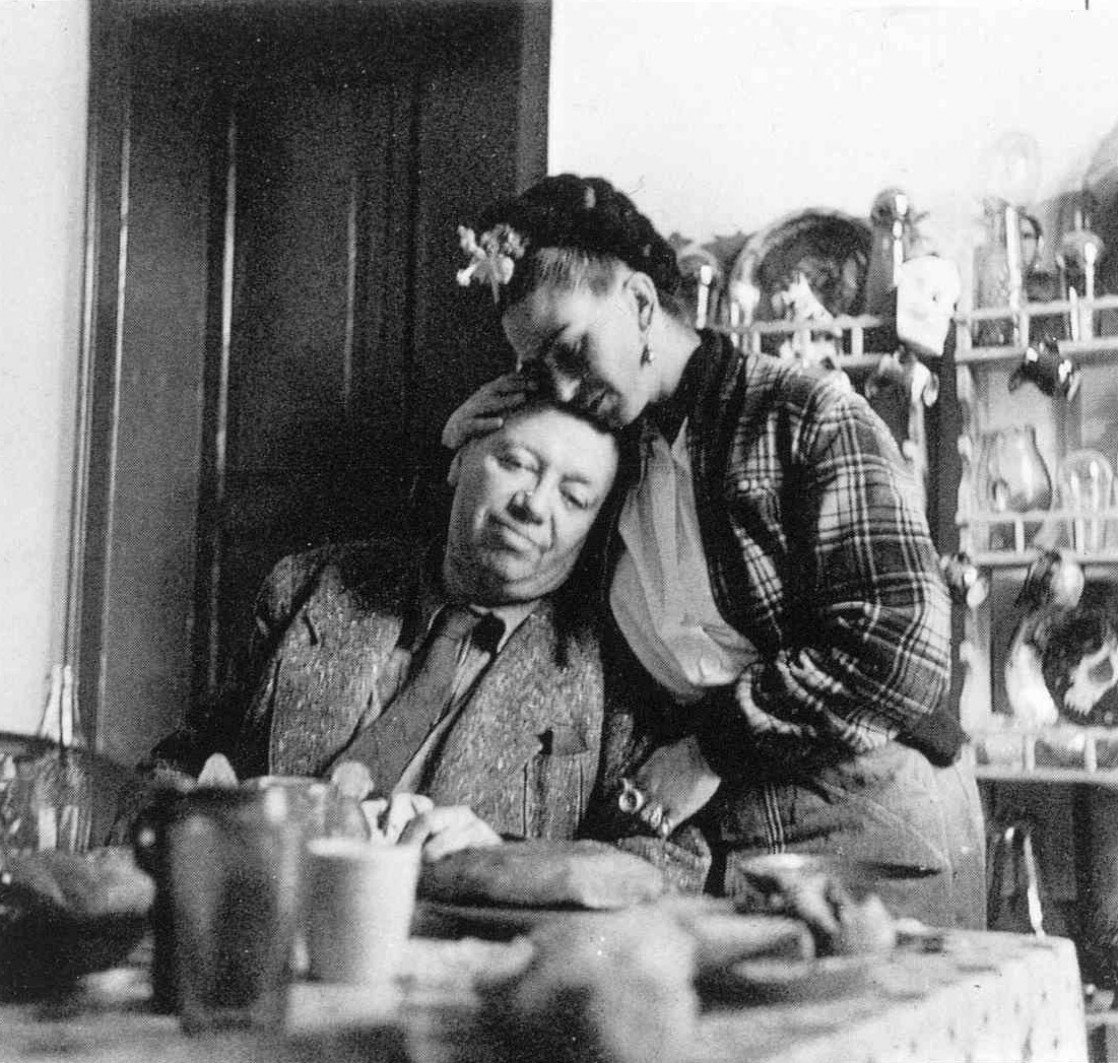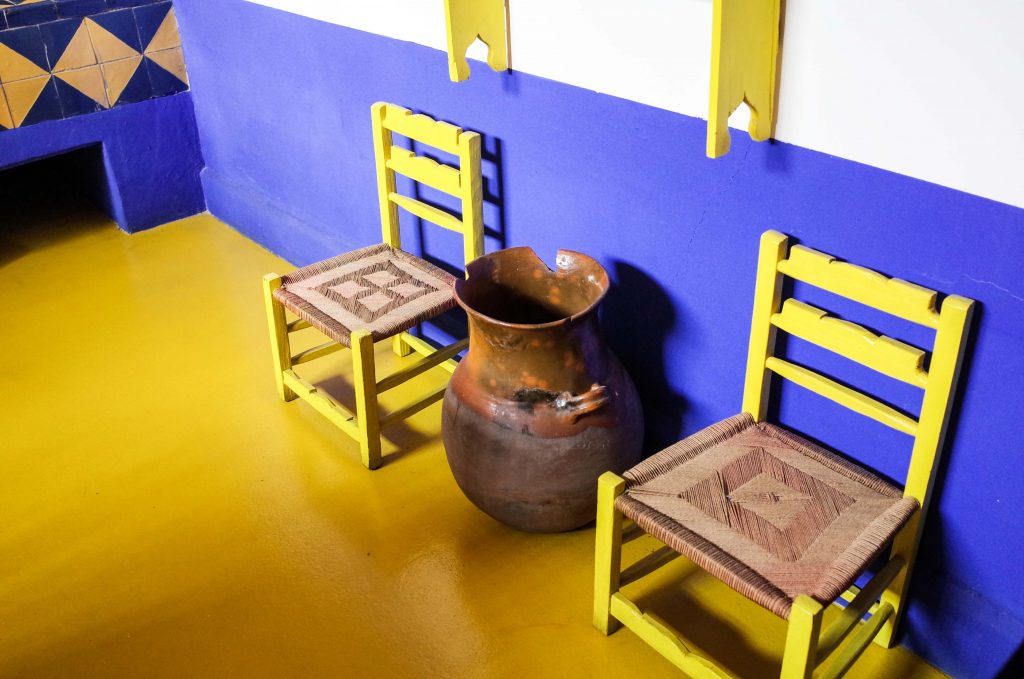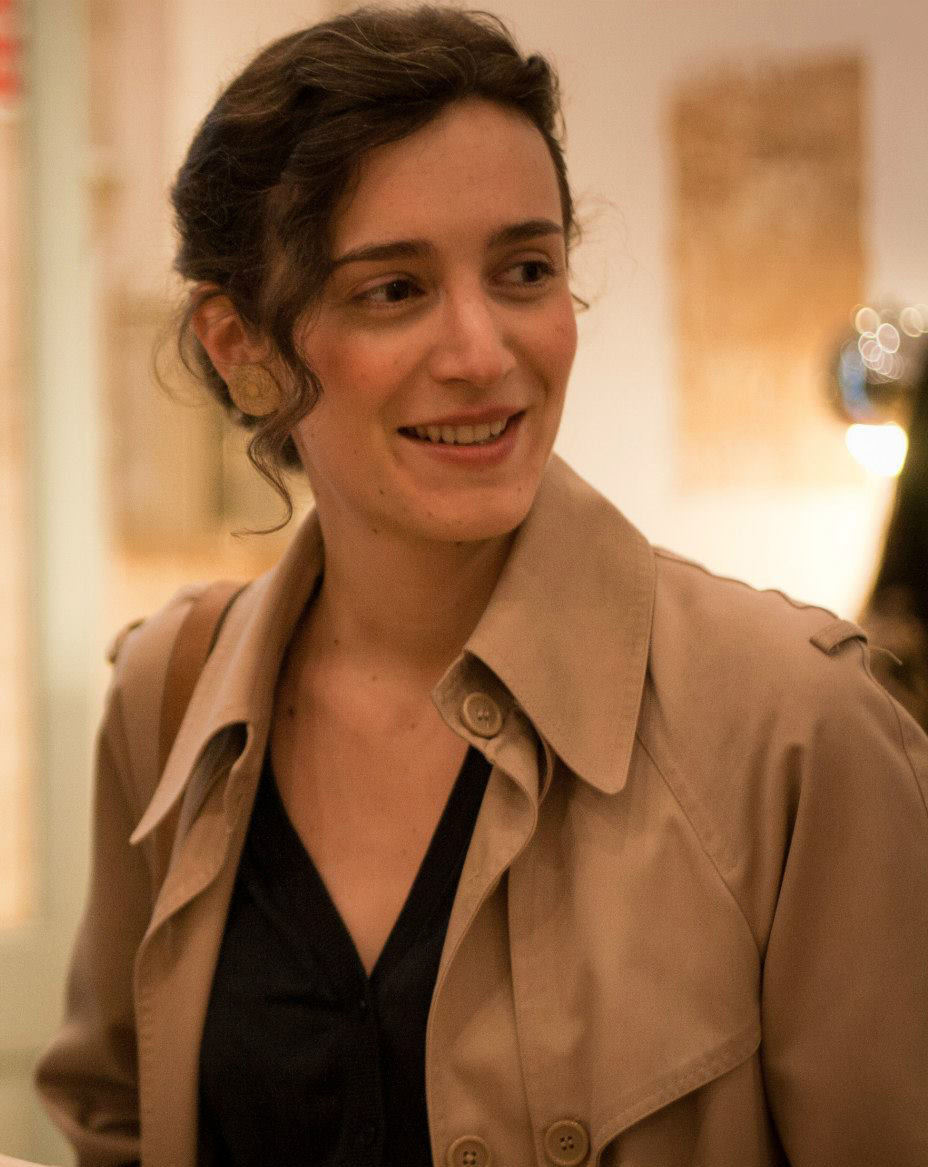Alice Waters, chef and co-founder of the famous Californian slow food restaurant Chez Panisse, describes the relationship between cooking and art as follows: “The most literal visceral connection we make is with food… The acts of art-making and cooking align in many ways; both reactive and creative, they mimic and accommodate one another.”
So, is there a connection between what happens in artists’ studios and what goes on in their kitchens? Amid all the pots and pans, can we find points of references to their work and their personalities? Are artists particularly creative when it comes to the everyday act of cooking? Through photos and inventories of their kitchens, as well as anecdotes relating to their eating habits, we will try to gain an insight into the culinary worlds of some well-known artists.
In this part of the series we look at an icon of the 20th century: Frida Kahlo. A still life of cut watermelons, kept bright in green and red tones, and bearing the inscription – “Viva la vida” (“Long Live Life”) is said to be the last picture that Frida Kahlo finished before her death in 1954. A largely unknown figure at the time, thanks to her revolutionary self-portraits and a dazzling biography, Kahlo became a world-famous artist and a permanent fixture in modern pop culture half a century later.

Today, the “Blue House” in Coyoacán, a district in the south of Mexico City, former home of the artist and the heart and hub of her life and work, is open to the public as a museum. Through the lush garden, past yucca palms, cacti, succulents and fruit trees, you reach the interior of the two-story house that looks more likely to be found in a village than in a city of millions.
When Frida Kahlo moved here with her husband, the painter Diego Rivera, in 1929, the pair redesigned the entire house according to their own ideas and gave the façade its striking cobalt-blue color. They had the floor of the dining room, the main setting for the artist couple's intense social life, painted in a bright, sunny shade of yellow which extended right through the kitchen. There are no watermelons here anymore, but you suspect that the worktop with its blue and yellow tiles must have been full of fresh fruits, vegetables and flowers that she brought with her from her numerous forays into the Coyoacán market.


Frida Kahlo's kitchen, Image via tastecooking.com
The groceries served Kahlo as inspiration and subjects for her still lifes with bananas, melons, oranges, pitahayas (dragon fruit) and numerous tropical fruit varieties, but also as a starting point for her culinary creations. Kahlo was fascinated by the tastes, colors and traditions of Mexican folk cuisine, and the influence of all this is reflected in the design of her kitchen and menu. The simple dishes of indigenous, pre-Hispanic Mexican cuisine were prepared on a classic wood-burning stove – even though gas ovens were already well established by that time – using traditional earthenware pots from Oaxaca and copper vats from Santa Clara that Kahlo and Rivera had picked up during their travels in the countryside. In the Kahlo-Rivera household, meals were a social activity and a political statement at the same time, an expression of the couple’s profound connection to the indigenous culture of the country.
Kahlo generally left the preparation of such dishes to her cook Eulalia, while she devoted herself to the presentation of the meals. She put a great deal of care and a love of detail into her menu planning and table decoration – regardless of whether it was for an important occasion such as the celebration of “El Día de los Muertos” (The Day of the Dead), or the lunches she shared with Rivera every day.

The act of laying the table served Kahlo as a playful way of experimenting with color and form: Lavish flower arrangements, often with blooms freshly picked from the garden, color-coordinated crockery, and compositions with fruit and vegetables all combined with a variety of different dishes to create an impressive gesamtkunstwerk.
In the context of Kahlo’s marriage to Diego Rivera, the culinary also played an important role – the artist symbolically hung dozens of tiny clay jugs over the stove, which together formed the names “Frida” and “Diego”, accompanied by two doves holding an entwined bond of love in their beaks. In the otherwise unconventional partnership, Kahlo adopted a somewhat traditional role here: She handled all the organization of the family mealtimes, cooked “mole poblano” for Diego – a complex recipe with more than 20 ingredients that was apparently his favorite dish and an infallible remedy for his mood swings – and brought him his lunch in a well-stocked, lavishly decorated basket when he was working outside the house.

Frida Kahlo and Diego Rivera, Image via remezcla.com

Frida Kahlo's kitchen, Image via nolisoli.ph
The extensive social network that Kahlo cultivated had a central meeting place in the dining room of the Blue House. During the 1930s it hosted the nation’s intellectual and cultural elite, who sat, feasted and debated around the festively laid table, sometimes in the company of well-known international figures who would stop by to see Rivera and Kahlo during their travels through Mexico. Anyone who had drunk mezcal and eaten tamales with the artist couple would often find themselves part of the family’s close circle of friends, which came to include Leon Trotsky, Dorothea Lange, André Breton, Georgia O’Keeffe and Alice Rahon.
Even as her physical afflictions – the result of a serious road accident in her youth – grew worse, the painter still found pleasure in eating and drinking in company: Without hesitation, she moved the dinners to her bedroom, where she drank tequila with her visitors and sampled the delicacies they brought her.
